FAQ
Common Queries and Questions
How to Control Sell by Dates
1. Min Intake Life is the time that any item will remain in the warehouse, in addition to the time it will be on the shelf in the retail outlet.
2. Issue Life is the minimum time any item can be held in the retail outlet. If the time between today and the ‘Sell By Date’ is shorter than the ‘Issue Life’ days entered in the stock Maintenance then the system will not allocate that item
e.g. Time in warehouse = 120 Days
Time in Retail outlet = 60 Days
Therefore “Min Intake Life” is 120 + 60 = 180 Days
And the “Issue Life” = 60 Days
Any item that is within the ‘Issue Life’ timeframe (i.e. in the warehouse with less than 60 days to its ‘sell by date’) will not be allocated.
3. The “Max Intake Life” can be set at any figure greater than the “Min Intake Life” and is designed to give the stock holder some control over having outlandish ‘sell by dates’ which are too far in the future.
You can set these figures to whatever suits you as an warehouse operator but remember that the difference between the ‘Min Intake Life’ and the ‘Issue Life’ has to be long enough to allow you to perform all your normal warehouse operations from receipt to despatch (including allocation).
Incidentally you can always check the state of your ‘sell by date’ stock by running the “Out of date Stock report” which is in the Warehouse reports menu. From the above example were you to input a date 60 days in the future it would show you what stock was in the warehouse that had gone into its ‘issue Life and therefore couldn’t be allocated.
How to Create a Pick Walk Sequence
Within the WMS there is the ability to configure a specific pick walk sequence through the warehouse to help maximise picking efficiency.
WMS Set Up -
Owner Maintenance (STS1000)
- Format Tab
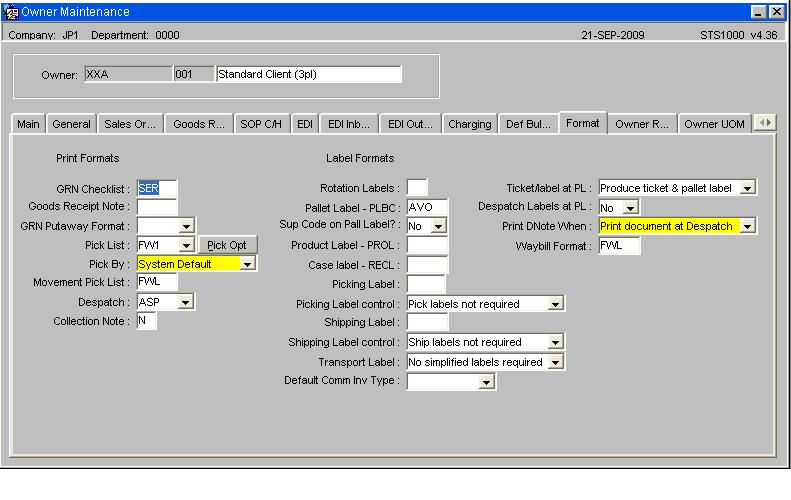
Key Points
Pick List Format must be set to FW1 Pick By System Default
Select the Pick Opt button to call an additional options box
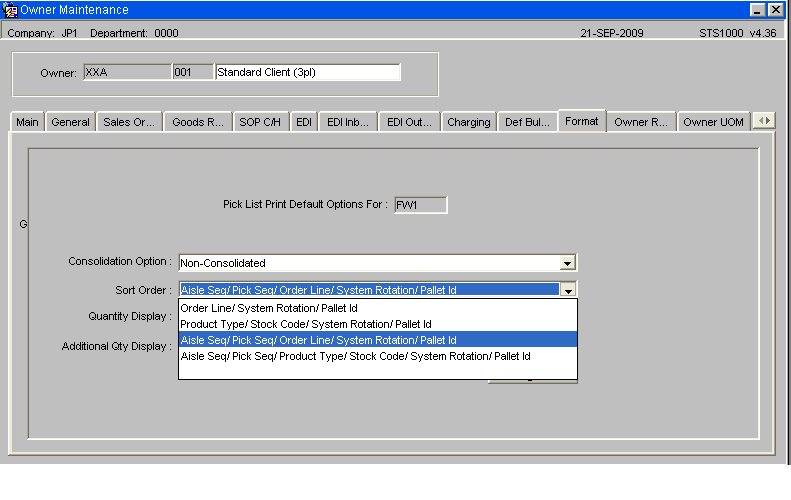
For a greater control and efficiency over the pick walk sequence select either a value of 3 or 4, so that the picking tasks will be sorted by location.
Aisle Sequence Maintenance (WHS0060)
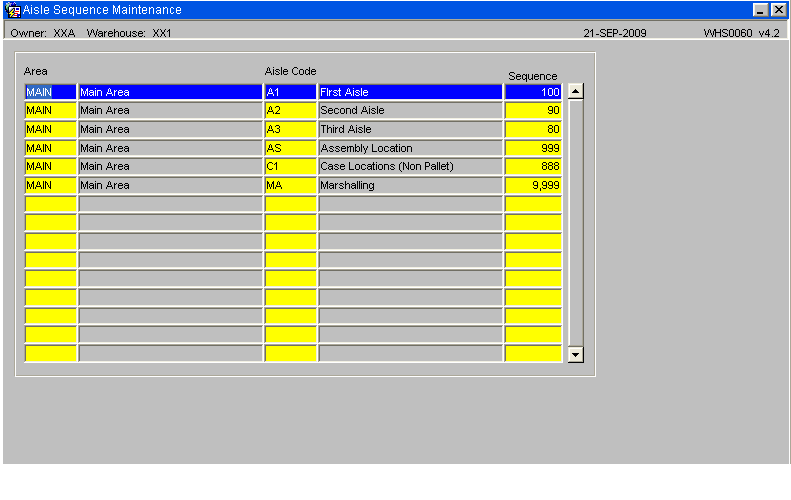
The sequence set against the aisle will help determine the sort sequence for the pick tasks, in the example above the pick tasks will be sorted in the following sequence A3, A2 and then A1.
Location Maintenance (WHS0090)
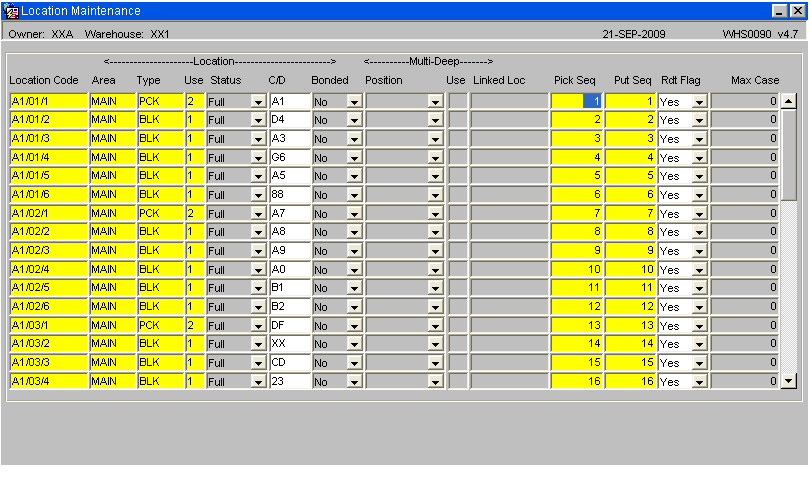
The Pick Sequence set against the location code will determine the sort sequence within a aisle for the picking tasks.
Putaway Re-Sequence Generation (WHS0472)
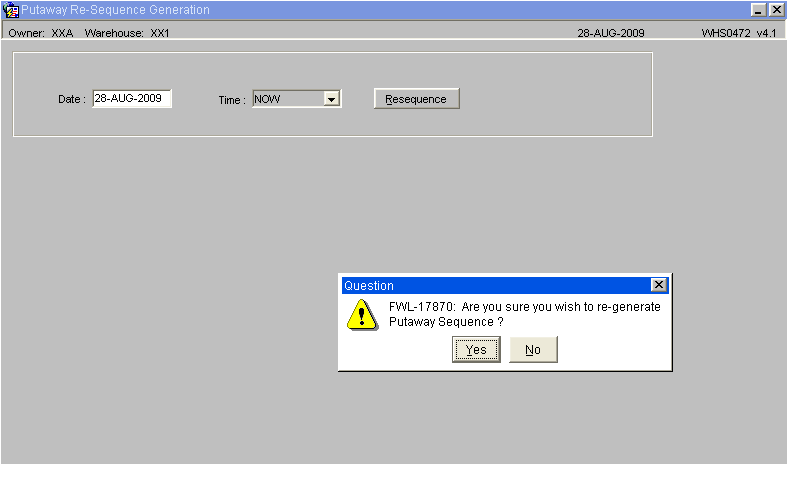
The Putaway re-Sequence Screen will generate both putaway and picking sequence numbers for the location codes.
NB: This will create a basic sequential count beginning at 1 for each individual aisle. It will also overwrite any existing records.
Free Locations (WHS0091)
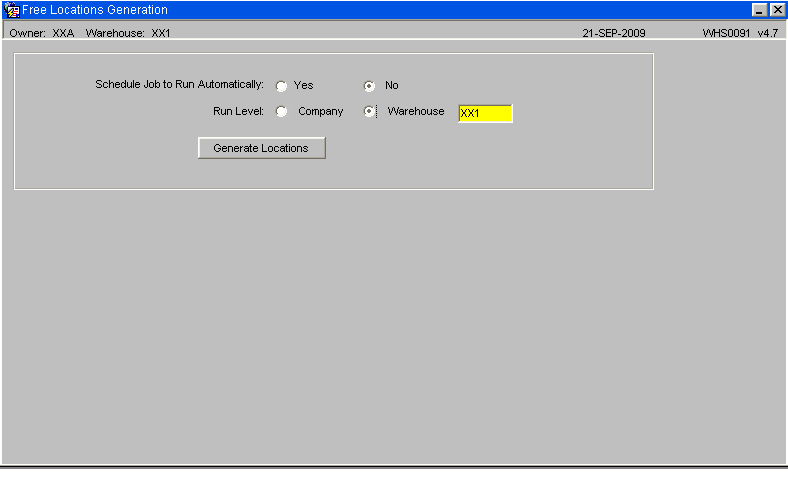
Once the Aisle and Location code have been assigned their sequence numbers, then run Free Location Generation which will create the Aisle Pick Sequence which is used to sort the picking tasks.